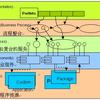Cellular-Vehicle-to-Everything (C-V2X) is currently at the forefront of the digital transformation of our society. By enabling vehicles to communicate with each other and with the traffic environment using cellular networks, we redefine transportation, improving road safety and transportation services, increasing efficiency of vehicular traffic flows, and reducing environmental impact. To effectively facilitate the provisioning of Cellular Vehicular-to-Network (C-V2N) services, we tackle the interdependent problems of service task placement and scaling of edge resources. Specifically, we formulate the joint problem and prove that it is not computationally tractable. To address its complexity we introduce a Deep Hybrid Policy Gradient (DHPG), a Deep Reinforcement Learning (DRL) approach for hybrid action spaces.The performance of DHPG is evaluated against several state-of-the-art (SoA) solutions through simulations employing a real-world C-V2N traffic dataset. The results demonstrate that DHPG outperforms SoA solutions in maintaining C-V2N service latency below the preset delay threshold, while simultaneously optimizing the utilization of computing resources. Finally, time complexity analysis is conducted to verify that the proposed approach can support real-time C-V2N services.
翻译:暂无翻译



